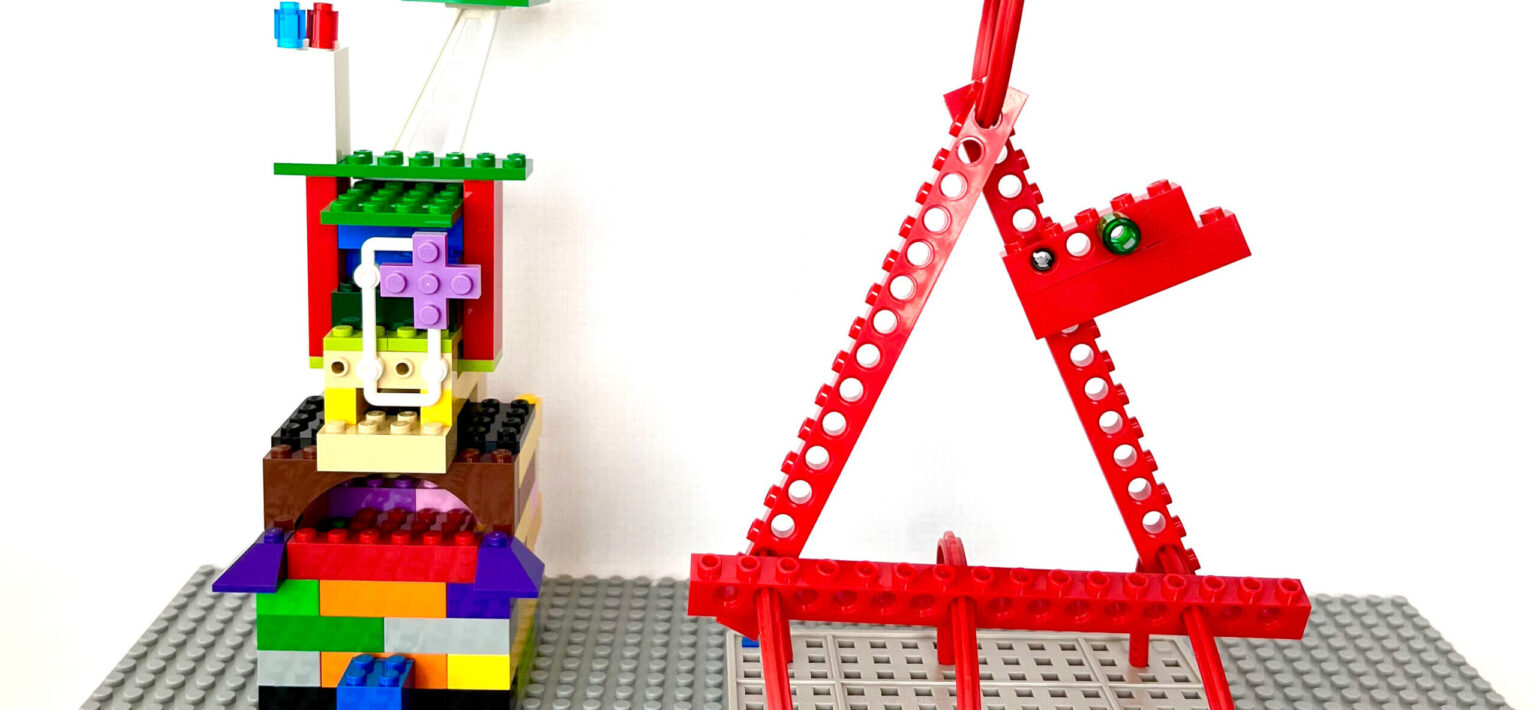Solo – Building neighboring towers
The child and adult each build a tower on the same plate. The aim of the activity is to practice building and we create room for shared play.

Procedure
Framework
Suggestion for introduction
We create a motivating framework for the child.
For example, we can say: ”The activity is about building neighboring towers. We share some bricks to build with. Our towers can be very different or look a like. We decide that for ourselves. There is only one rule: The two towers should both be on [this plate]. It will be exciting to see what we build, and maybe we want to build a bridge between the two towers.”
Time
The activity can be adapted to the framework of one lesson and varied according to the time available and the child’s prerequisites.
Materials
We need some building materials well suited for building towers. We can choose one kind of material the child likes or make a mix of building materials, for example Lego, Bakoba, or wooden bricks.
During the activity
During the play session, the child encounters challenges and successes, where we can stop and help spot what is difficult or what is going well. We can do this in several ways:
Reflection routines
When we get the opportunity to reflect together with the child on what challenges or discoveries arise along the way, we can use one or more reflection routines. It could be, for example, a learning metaphor with a social strategy that we practice, an emoji that describes the feeling we have right now, or a rating of how well we think the building is going. In this way, a reflection routine can help to show and put into words the experiences that the child has during the play session.
Facilitating questions
We can ask facilitating questions to the child along the way, as they naturally arise in the building process. In this way, we facilitate the play session so that we continue the play and at the same time learn something from it. For example:
- I see that you have stopped building. I wonder how we can continue from here?
- I see that you have encountered a challenge. Should we try to solve it together?
- Try to notice what you are doing right now. Do you think this is a collaborative strategy?
Show and Tell
Finally, in the play session, we give a Show and Tell of our construction, so that we have the opportunity to share our experiences, reflections, and feelings about the construction process.
First, we talk about our model and the process of building it. During the Show and Tell, we can use reflection routines and reflective questions to support the discoveries that have been made. For example:
- What went well?
- What was difficult?
- Is there anything that you want to do differently the next time we build a tower?